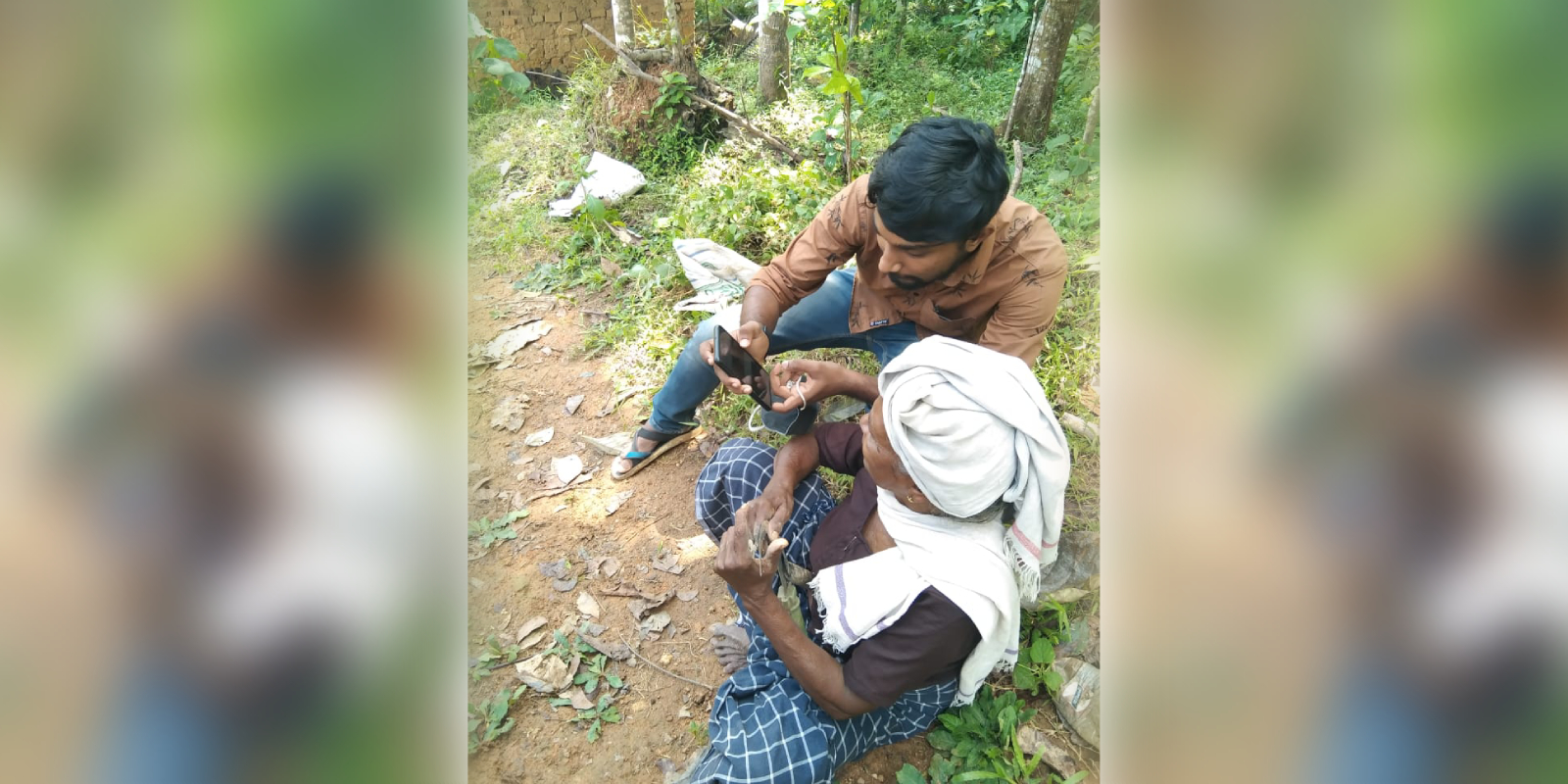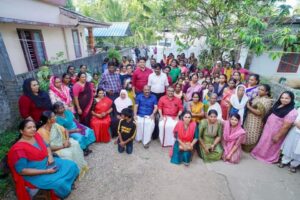Even as Kerala aims to achieve 100% digital literacy, challenges galore. One significant hurdle is lack of access to smart devices in non-urban regions, economically backward families.
Published Oct 22, 2024 | 7:00 PM ⚊ Updated Oct 22, 2024 | 7:00 PM

A digital volunteer providing training to a senior citizen. (DigiKeralam)
Kerala is on the cusp of setting another national benchmark as it prepares to declare itself the first digitally literate state.
At Dakshin Dialogues 2024, Kerala Industries Minister P Rajeev stated that as digital literacy is necessary to bridge the digital divide, the state “most probably, by November, will become the first fully digitally literate state in the country.”
Through the Digi Keralam project and with the Kerala Fibre Optic Network (K-FON) initiative as a backbone, the state government is optimistic about achieving universal digital literacy. The aim is to bridge the digital divide and empower citizens through technology.
Officials in the state say the move towards digital literacy came as a continuation of Kerala’s emphasis on public education and social reform.
With near-total literacy achieved decades ago, the state government now envisions creating an inclusive digital ecosystem that enables every household to access the internet, government services, and digital financial tools.
“With the rapid expansion of the internet, social media, and online entertainment, digital platforms have become commonplace. However, it will have to be ensured that these advancements are accessible to all sections of society. Digi Keralam will help achieve that aim,” an official of the Department of Electronics and Information Technology told South First.
Launched in January 2024, Digi Keralam aims to provide basic digital literacy to all citizens aged 14 and above, creating a pathway for residents to engage seamlessly with online services, government schemes, health resources, and financial tools.
The mission calls upon the youth to take the lead in transforming Kerala into a model for other states.
Young volunteers, including members of the National Service Scheme (NSS), NCC cadets, Scouts and Guides, are being mobilised to spread digital knowledge across communities.
“We invite the younger generation to climb the digital ladder and bring the older generations along with them, hand in hand. This collaborative effort will make digital literacy a reality for everyone in Kerala,” the official said.
The Local Self Government Department is also playing a major role in this initiative as it roped in Kudumbashree, a community network of women groups, that implements livelihood and social development activities in Kerala. This will help the initiative reach the grassroots.
With digital knowledge, citizens will be able to access government programmes, healthcare information, and essential public services. These can all be accessed through a smartphone or computer. Besides government services, non-banking facilities, health resources, and key government notifications can all be made available online.
It is expected that the use of these services would aid vulnerable sections of society find greater social inclusion. From members of tribes, to farmers, fishermen, homemakers and elderly citizens, everyone will have access to the opportunities and entertainment available through digital platforms.
“Kerala is determined to prove that digital literacy is not just a goal — it is a pathway to growth, empowerment, and self-reliance,” said an official of Local Self Government Department.
The official added, “With the launch of Digi Keralam, the state is setting a precedent for other regions across the country. Through collective efforts, the government aims to bring digital literacy to every corner of society, empowering common citizens to dream big and engage with the digital world confidently.”
At Dakshin Dialogues 2024, talking on “Digital Divide: Rural and Urban”, Minister Rajeev stated that for Kerala there is no urban -rural divide. He also pointed out that 86 out of 100 people have internet connectivity and mobile and smartphone penetration is very high in the state.
He explained that the term digital divide has itself undergone change: “This ‘digital divide’ term is expanding. Earlier it meant the difference between those with access to the computer or internet and those who don’t have such access. These days, broadband connectivity and ICT are also considered when talking about the divide. The term has now expanded to connote those who are connected with the rest of the world and those not connected,” the minister stated, explaining that providing affordable access to the internet is a challenge.
The Kerala Fibre Optic Network (K-FON) initiative, a flagship project of the state, aims to provide affordable internet access to over 20 lakh economically disadvantaged households and all government offices.
Designed to create a robust infrastructure, the project seeks to ensure internet connectivity even in remote regions, including tribal hamlets and coastal areas.
The state government assessment is that K-FON will play a pivotal role in achieving digital literacy by providing last-mile connectivity to marginalised communities that have remained on the periphery of technological advancement.
The government also intends to use the network to strengthen online public service delivery, reduce bureaucratic delay, and promote e-governance.
According to officials, schools, libraries, and public institutions will become hubs for digital literacy programs.
Workshops, awareness drives, and volunteer-based teaching models are being rolled out to familiarise citizens with basic digital tools, from using smartphones and accessing government portals to making online payments.
Even Kudumbashree is organising “Digikootams” through which digital volunteers are provided video tutorials to aid them in promoting digital literacy.
An official at Kudumbashree explained, “Kerala’s digital literacy mission goes beyond mere internet access. Digital literacy is the ability to use digital devices safely and effectively, access e-services, and engage in digital transactions. The mission aligns with Kerala’s broader vision of e-governance, financial inclusion, and digital empowerment of citizens.”

A Digikkoottam initiative in Kollam that was attended by Ministers K N Balagopal and M B Rajesh and other higher officials in February
There are challenges that remain in the path of full digital literacy. One significant hurdle is access to devices.
While K-FON addresses internet connectivity, not every household owns smartphones or computers — particularly in economically backward or rural areas.
The government will have to explore ways to distribute affordable devices under a public-private partnership.
Another challenge is digital awareness. While younger generations may adapt quickly, many older citizens find it difficult to navigate the online world.
Digital literacy volunteers say ensuring these groups are not left behind requires innovative teaching strategies and patient, volunteer-driven training programmes.
Although K-FON promises last-mile connectivity, geographical challenges could slow the rollout in certain areas.
An official at the Department of Electronics and IT of the state government said, “The aim of declaring the state fully digitally literate by November is not likely to happen because of slow progress associated with K-FON.”
“There is also the issue of bringing on board service providers and coordinating across various departments. Underground cables are being laid under the initiative. Some government offices have refused to become a part of it, demanding free connection. These issues will have to be resolved if the state wishes to make information, knowledge, and services truly accessible to all,” the official said.
(Edited by Rosamma Thomas)
